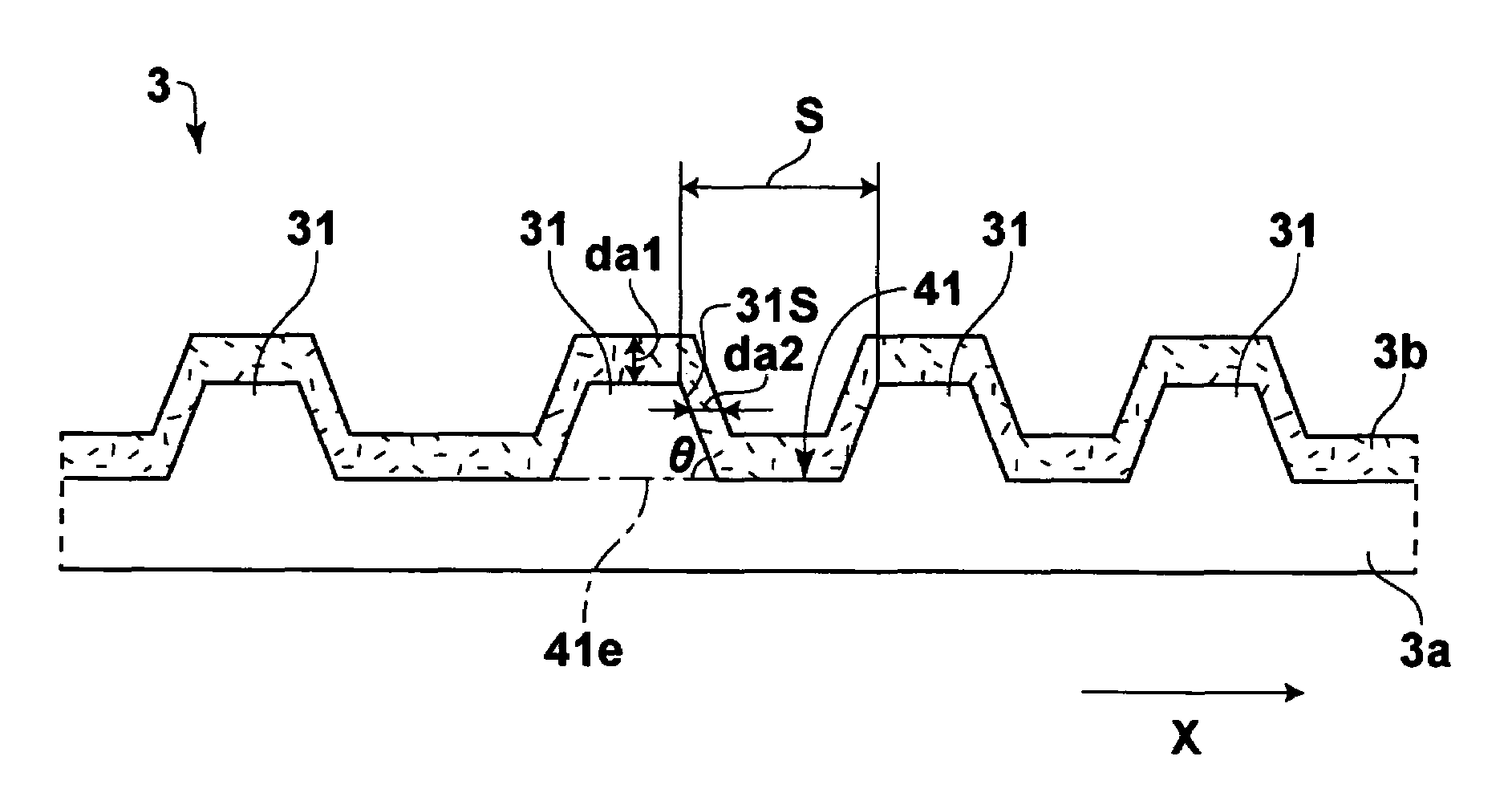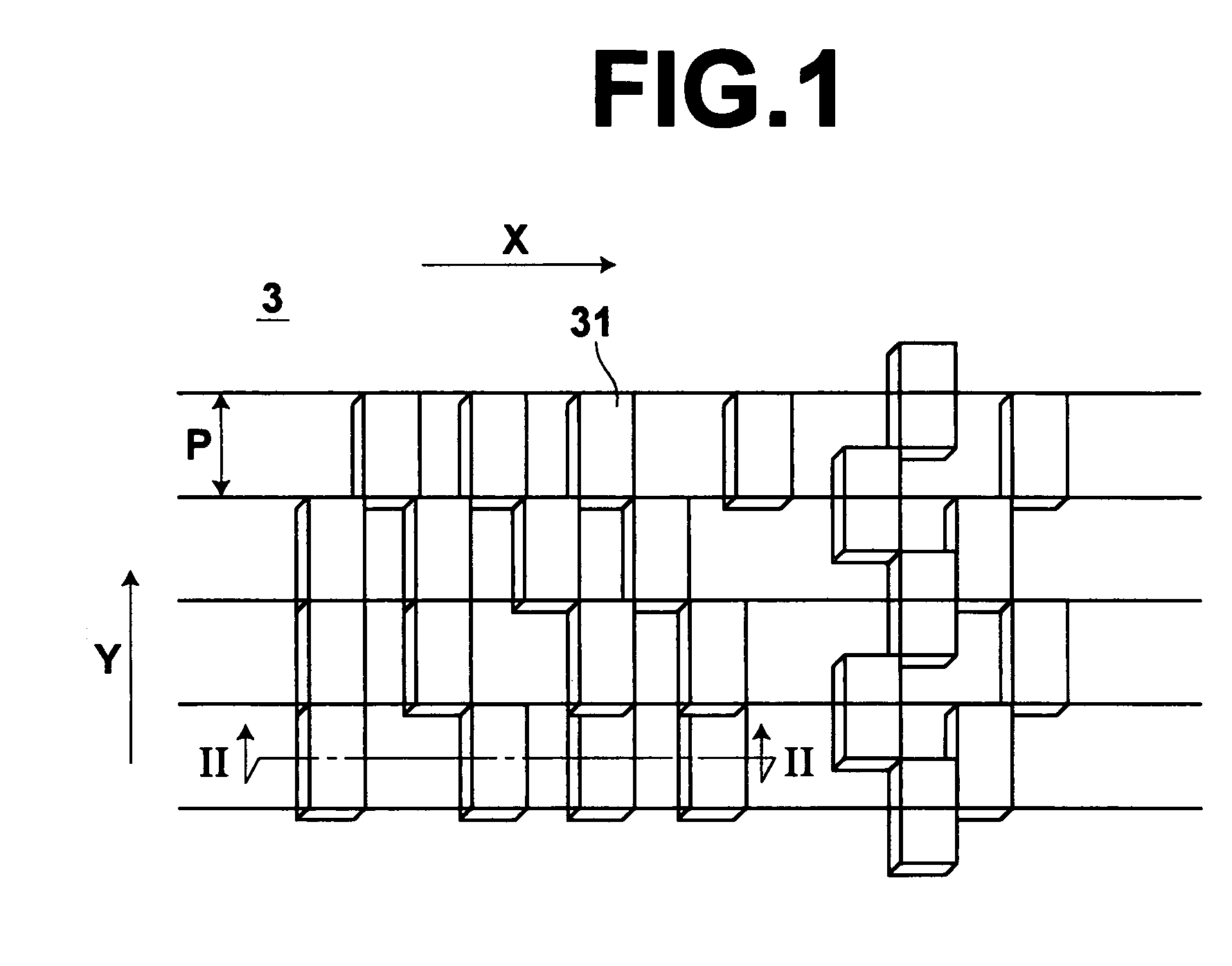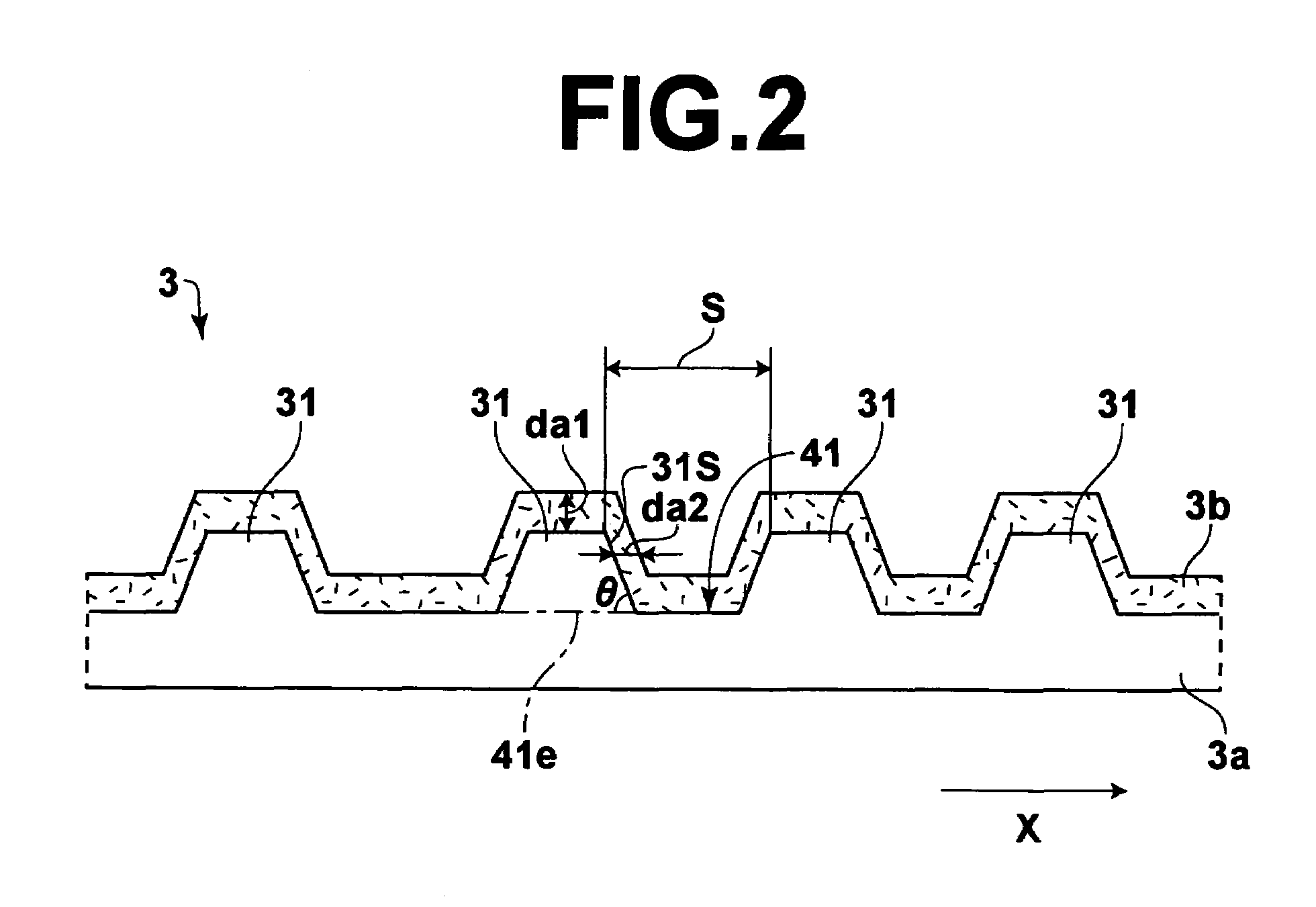Master information carrier for magnetic transfer and magnetic transfer method
a technology of information carrier and magnetic transfer, applied in the direction of maintaining head carrier alignment, nanoinformatics, instruments, etc., can solve the problems of deteriorating productivity, short time required for preformat recording, and partial loss of magnetic layer or pattern, etc., to achieve excellent reproduction signal and improve durability
- Summary
- Abstract
- Description
- Claims
- Application Information
AI Technical Summary
Benefits of technology
Problems solved by technology
Method used
Image
Examples
examples
[0072]Master information carriers in accordance with first to twenty-second embodiments of the present invention and first to fourth comparative examples were made in the following way and transferred signal quality and durability of the master information carriers were evaluated in the following manner. The result is shown in the following table. In the table, “emb” is “embodiment”, “c / e” is an abbreviation of “comparative example”, “SQ” is an abbreviation of “transferred signal quality”, and “dur” is an abbreviation of “durability”.
Evaluation of the Transferred Signal Quality
[0073]Quality of the signal reproduced from the slave medium was evaluated by the use of electromagnetic conversion property meter (SS-60: KYODO Electronics). A GMR head which was 0.12 μm in reproducing head gap, 0.41 μm in reproducing track width, 0.2 μm in recording head gap and 0.67 μm in recording track width was employed. The read signal was divided into frequencies by a spectro-analyzer, and the differen...
third embodiment
[0079]The information on the master information carrier were transferred to the slave media in the same manner as in the first embodiment except that da2 / da1 was changed to 1.3.
fourth embodiment
[0080]The information on the master information carrier were transferred to the slave media in the same manner as in the first embodiment except that da2 / S was changed to 0.09.
PUM
| Property | Measurement | Unit |
|---|---|---|
| angle | aaaaa | aaaaa |
| angle | aaaaa | aaaaa |
| thickness | aaaaa | aaaaa |
Abstract
Description
Claims
Application Information
 Login to View More
Login to View More - R&D
- Intellectual Property
- Life Sciences
- Materials
- Tech Scout
- Unparalleled Data Quality
- Higher Quality Content
- 60% Fewer Hallucinations
Browse by: Latest US Patents, China's latest patents, Technical Efficacy Thesaurus, Application Domain, Technology Topic, Popular Technical Reports.
© 2025 PatSnap. All rights reserved.Legal|Privacy policy|Modern Slavery Act Transparency Statement|Sitemap|About US| Contact US: help@patsnap.com



